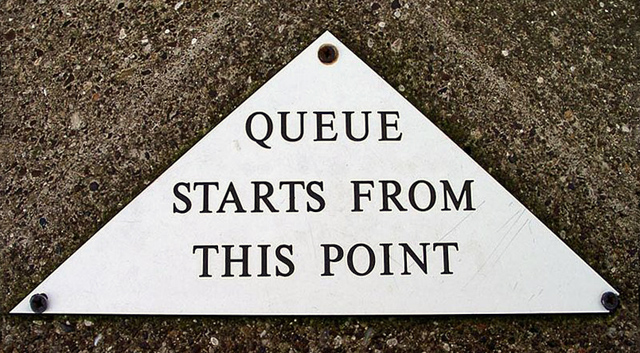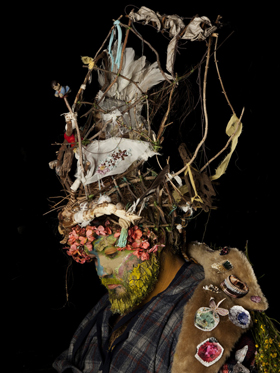Q&A: Alternatives – Scott Redford (part 2)
THIS IS PART 2 of the Q&A ‘Alternatives’ interview with Scott Redford. You can read Part 1 here.

~
![]() What is your opinion of the current state of the three main pillars of the contemporary arts system: the museum, the art biennale, the commercial gallery?
What is your opinion of the current state of the three main pillars of the contemporary arts system: the museum, the art biennale, the commercial gallery?
In many ways, all are redundant to new thinking on art and culture. In Australia the museums suck up all the cultural air as they have reliable government funding. Ditto the big biennale shows, which I think have run their course as in any way being about new ideas and instead are now just effective tourist attractions (not that I am against that, per se).
Do you think the ‘cultural air’ is dependent upon (and so limited to) what is government-funded? If so, are Web 2 and similar media of wide-spread expression sustained by something other than ‘cultural air’? If so what is it?
I suppose what I meant by ‘cultural air’ (very Duchampian that concept) is the current mainstream ‘life support’ for the arts. It’s basically about who gets control of the Government money, isn’t it? It’s an ever-changing situation but one that remains largely reliant upon the old means of evaluation. Very soon the situation will be greatly changed, remember social media has only been with us for five or so years. If we read ‘cultural air’ to be a sustaining oxygen then that’s just Culture itself … and human beings make Culture, so that will always fuel everything.

And private galleries?
The private galleries in Australia are mainly run by shopkeepers and rich housewives. Art in Australia is doomed.
Is a private gallery not, by its nature, a shop selling art; albeit a high-class shop?
Yes, totally. Hence my new experiment of a vintage collectables shop connected to a contemporary art gallery in suburban Brisbane. It’s not far from the walls of the art gallery to the walls of the junk shop. What the public crave is an answer to why their junk is worth so little and museum and gallery ‘junk’ is worth so much. Many art-world insiders still believe that pretence of hierarchy is essential to fend off a ‘philistine’ public, rather than be transparent about how value is really created. So I see this question of value as crucial to the creation of a meaningful and transparent engagement with the public; a public that is, of course, always ‘invented’ by the artist or the intellectual/political spin doctor.[1]
The question is further complicated by an innate sense of conservatism in human beings. We crave exposure of falsehoods and fraud whilst also wanting the hierarchy deemed necessary for an ordered and ‘civil’ society. Often the values we create for ourselves are inborn.[2] So it’s a complex area that locally (in our collectibles shop and gallery in Stafford, Brisbane) I find still throws up that same simple question about contemporary art: Why is one piece of the world worth so much more than another?

What is the nature of the doom that Australian art faces? How is this being avoided in other parts of world?
Overseas, at least, there are enough free thinkers with access to cultural air to make some sort of impact. Internationally a number of people still believe that art involves progress.
There can be no doubt that the most innovative thinking on and around ‘contemporary art’ is coming from a collaborative network of younger and older Europeans: Art & Language, Daniel Birnbaum, Nicolas Bourriaud, Catherine David, Diedrich Diederichsen, Liam Gillick, Isabelle Graw, Boris Groys, Jaques Ranciere, Sven Lütticken, Jan Verwoert, Anton Vidokle, Peter Weibel at ZKM and many others.
The sort of artists I find interesting are people like Merlin Carpenter, Seth Price, Kelley Walker, Wade Guyton, Josh Smith, John Armleder, Rena Spaulings, Rudolf Stingel, Michael Zavros, Anthony Lister, Peter Saville, Anton Vidokle, Anselm Reyle as well as so-called street artists such as Banksy, Mr Brainwash and Space Invader, to name a few. And then there are the better known ‘family favourites’: Jeff Koons, Damien Hirst, Tracey Emin, Takashi Murakami, Richard Prince, General Idea, Robert Longo et al.
Most Australian art simply does not interest me.
Why?
Here in Australia a small group of power brokers repress or ignore any dissent in order to build up their careers. Australia will never get the international kudos it craves. Australian art is government art. No risks will ever be taken by public servants. Also market-wise Australia faces a crisis of value in its own art. The work of many ‘history of art’ artists has lost its market value and now only has its symbolic value left (its history-of-art value). Canonical Australian art such as Robert Hunter, Juan Davila or Jenny Watson languishes at the lower end of the market whilst the value of the work of their overseas counterparts soars. In many ways, Australian art is like a junk shop of cut-price bargains. It’s not far from the walls of the gallery to the walls of the junk shop.

More generally, what are your views on the exhibition as the primary format and mechanism for engaging with visual art?
I have always thought art was something made in private and validated in public. With the rise of social media this is even more the case. Art is a public activity, without being seen and mediated it is just stuff; so public exposure by exhibition and/or the Web is essential. All humans know validation comes from others and this is why they reveal themselves so much on social media. It’s a human thing.
That is an interesting point about validation. Do you think art is legitimised by the viewer (not, say, the intentions of the artist or the imprimatur of the institution)?
Yes. In the end there is only the public.
In terms of the classic expression of the exhibition – things displayed in a special way, in a special room (often a white cube) in a special building (often an august institution) – do you think this remains a useful way for viewers to engage with the work of artists?
Yes. The internet is a wonderful free-for-all; just try Googling ‘art’ and see what heterogeneous mash appears. It’s fascinating. And, as the computer and the internet are increasingly modelled on the human brain, it may become ever more representative of ourselves. But human beings also crave order. We want stability. We want to know that most things in life are predictable, so the museum has its uses for sure. It is just that now museums must relinquish their role as sole arbiter of worth and value. That will not happen till the baby boomers go.

__________________________________________________________________________________________________________________________________________________________
THIS IS PART 2 of the Q&A ‘Alternatives’ interview with Scott Redford. You can read Part 1 here.
_____________________________________________________________________________________________________________________________________________________________
Notes:
[1] see Bettina Funcke ‘Pop or Populus: Art Between High and Low’ (Sternberg Press 2009)
[2] see Paul Bloom ‘How Pleasure Works: The New Science of Why We Like What We Like’ (Norton 2010)
______________________________________________________________________________________________________________________________________________________________
Further Information
This video by Moja Reeves shows artists Anthony Lister and Magnus McTavish painting the exterior of Scott Redford and Ben Makin Art’s junk–art store, Tu M’ Vintage, 7 Hayward Street, Stafford, Queensland 4053.
This video, also by Moja Reeves, was made for a show at MOP, an artist-run space in Sydney. The performance is mash-up of some of Scott Redford’s previous themes including ‘Dead Board’ (in which surfboards are sawn in two – a reference to boards that snap under pressure in the surf); his 80s Black works (retro objects sprayed black and presented as museum objects); and DAMMN, a fictional surfer-artist of indeterminate gender whose biography, bon mots and creative oeuvre find their way into the public domain through a variety of strategies that hint at the bigger story behind a character who is rapidly becoming a meme.
_______________________________________________________________________________________________________________________________________________________________
Images (from the top):
Melbourne Art Fair [creative commons photo by Fernando de Sousa]
Government-issue cultural air dispensers [aka WWI gas masks; photo by Francis Whiting Halsey 1920]
Art or Junk? Interior of Scott Redford’s Tu M’ Vintage shop [photo © Carl Warner]
Sidewalk sign [creative commons photo by Zyance]
Top of the first page of images when Googling ‘art’
~





In relation to scott redfords views expressed on ‘the daily review’ about boycotting the melbourne art festival over its main patron transfield’s association with manus island detention centre, for what its worth I have tried to express my support for scott’s views but alas my post’s havent been allowed.
So although it looks as though he has no support it is not true. Visual artists should in fact boycott such an event. -greg hoey.